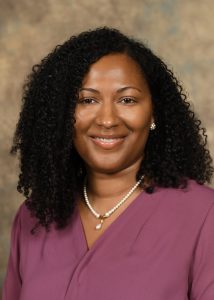Innovations in Mental Health Treatment
|
Innovations in Mental Health Treatment
By Danielle J. Johnson, MD, FAPA The past year has brought exciting innovations in treatment options for people with attention deficit hyperactivity disorder (ADHD), major depressive disorder (MDD), and obsessive-compulsive disorder (OCD.) The U.S. Food and Drug Administration (FDA) approved the marketing of two devices which offer non-medication alternatives for the treatment of OCD and ADHD. In August 2018, the Brainsway Deep TMS (Transcranial Magnetic Stimulation) system was approved for the treatment of OCD. Deep TMS uses specially designed magnets to stimulate specific larger volume areas of the brain beneath the surface of the skull. It is a non-invasive treatment that involves five 20-minute sessions per week for six weeks while sitting in a chair wearing a helmet with a sensation of tapping during the treatment. Patients can continue medication and psychotherapy while receiving deep TMS. According to the National Institute of Mental Health (NIMH), the lifetime prevalence of OCD among U.S. adults is 2.3% and 50% of these have had serious impairment. Having another treatment option will bring hope to many people with severe OCD. In April 2019, the Monarch eTNS (external trigeminal nerve stimulation) system was approved for the treatment of pediatric ADHD as monotherapy in children ages 7 through 12 years old who are not currently taking prescription ADHD medications. The Monarch eTNS System is intended to be used at home under the supervision of a caregiver when the child is sleep. The cell-phone sized device generates a low-level electrical pulse that feels like a tingling sensation and connects via a wire to a small patch that adheres to a patient’s forehead, just above the eyebrows. The system delivers electrical stimulation to the branches of the trigeminal nerve, which sends therapeutic signals to the parts of the brain thought to be involved in ADHD. The NIMH reports that the prevalence of ADHD is increasing, and severe ADHD is being diagnosed at an earlier age. This can be a treatment alternative for parents who prefer to avoid medications at an early age. Clinical response is expected in four weeks. The mechanism of action of most antidepressants involve the neurotransmitters serotonin, norepinephrine, and dopamine. In March 2019, two antidepressants with novel mechanisms of action were approved. Zulresso (brexanolone) was the first drug specifically approved for postpartum depression. Postpartum depression affects about 15% of women. Zulresso modulates the neurotransmitter GABA. It is administered as a 60-hour intravenous infusion in a registered healthcare facility. Symptom improvement was seen at the end of the infusion and at the end of 30-day follow-up. There has never been a medication that treats the symptoms of postpartum depression so rapidly, so this can significantly improve the quality of life for the mother, infant, and her support system. Spravato (esketamine) nasal spray was approved for treatment-resistant depression in conjunction with an oral antidepressant. Patients must have tried at least two antidepressant treatments at adequate doses for an adequate duration in the current depressive episode before trying Spravato. The spray must be administered in a certified medical office where the patient can be monitored. Spravato is taken twice a week for four weeks then once a week for a month, then once a week or once every two weeks. It is an antagonist of the NMDA receptor, a type of glutamate receptor. Approximately 30% of people with MDD are considered to have treatment-resistant symptoms and have the potential to benefit from esketamine. For more information about these treatment options: https://www.brainsway.com/treatments/obsessive-compulsive-disorder |
